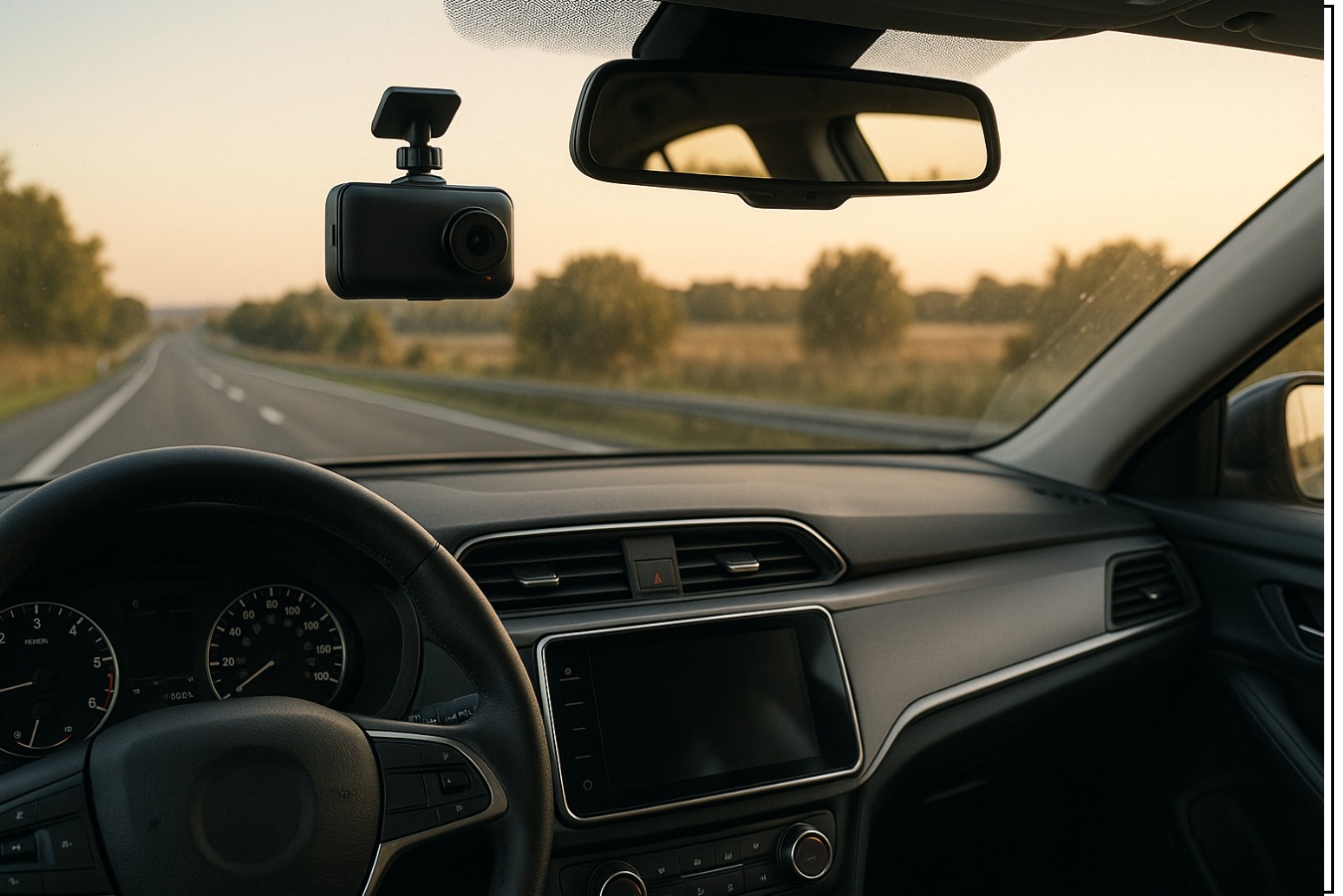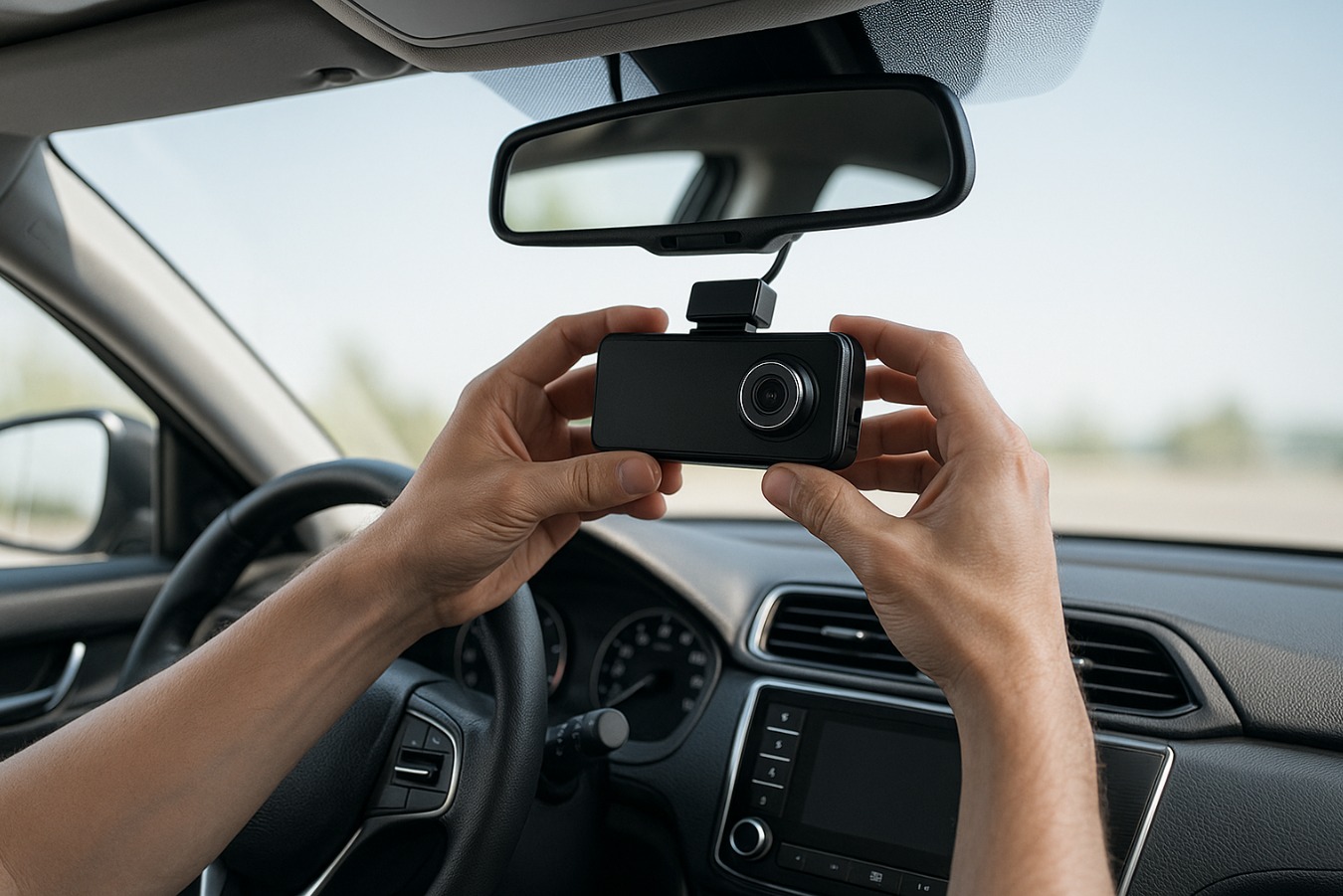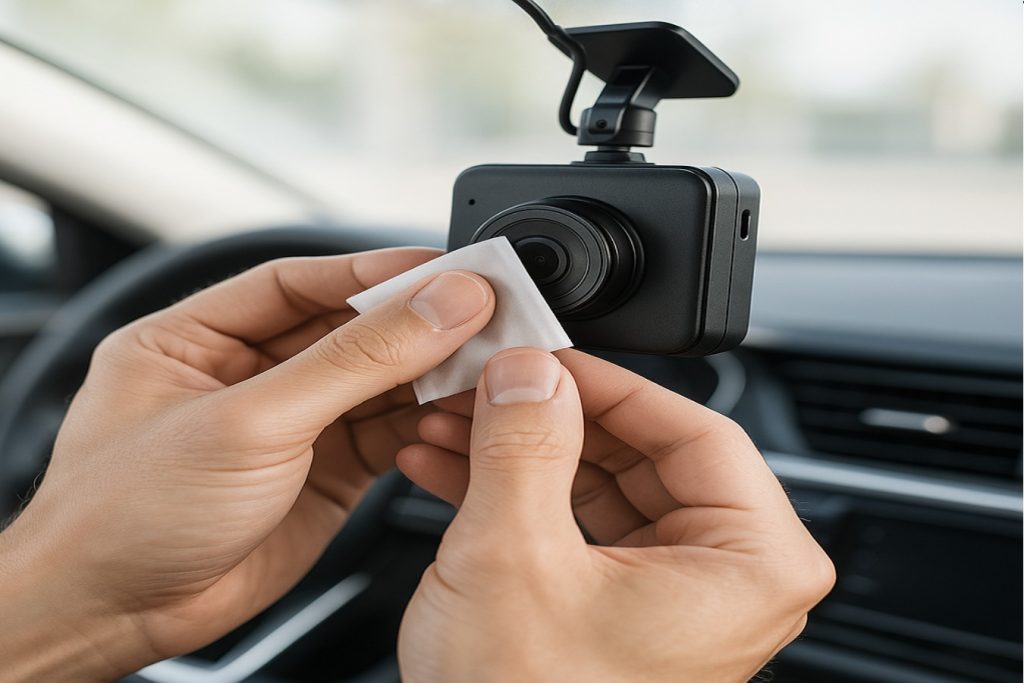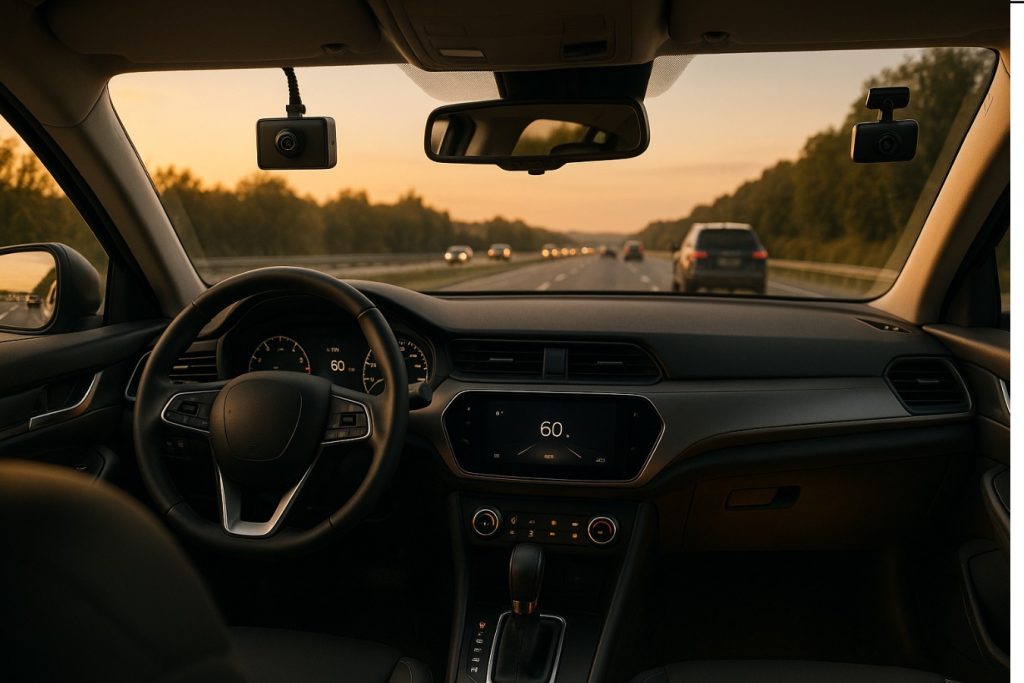
How to Install a Dash Cam | Front and Rear Installation Guide

Our editorial team individually chooses every products on healthy lifestyle that is suggested on obonappetite. We might get paid if you buy something after clicking on any of these links.
Installing a dash cam in your vehicle can significantly enhance both your driving experience and safety. By capturing high-quality footage of your journeys, dash cams provide invaluable evidence in the event of accidents, disputes, or insurance claims. This comprehensive guide will walk you through the essential steps to successfully install a front and rear dash cam, ensuring optimal performance and peace of mind on the road.
- Understanding Dash Cams
- Our Top Picks on solo dash cam
- Benefits of Using Front and Rear Dash Cams
- Choosing the Right Dash Cam for Your Vehicle
- Our Top Picks on Dual Channel
- Preparing for Dash Cam Installation
- Safety Precautions: Airbags and Wiring
- Understanding Your Vehicle’s Power Supply
- Installing Your Dash Cam
- Installing the Rear Dash Cam: Tips and Tricks
- Hardwire Installation vs. Plug-in Options
- Testing and Finalizing Your Dash Cam Setup
- Securing Cables and Ensuring a Clean Installation
- Regular Maintenance and Updates for Your Dash Cam System
- Your Questions, Answered
Understanding Dash Cams:
What is a Dash Cam?
A dash cam, or dashboard camera, is a small device mounted on your vehicle’s front windshield or rear window, designed to continuously record video footage of your surroundings as you drive. Dashcams are invaluable for documenting every journey, offering a reliable way to review routes or incidents. This constant surveillance provides not only security but also a convenient means to verify events, should the need arise.
Benefits of Using Front and Rear Dash Cams:
Installing both front and rear dash cams equips your vehicle with an extra set of eyes, capturing comprehensive footage from all angles. These recordings serve as crucial evidence in legal proceedings or insurance claims, potentially deterring reckless driving and criminal activities. With a dash cam, you gain peace of mind, knowing that any incident is documented. Additionally, dashcams can lower insurance premiums and reduce repair costs over time, making them a wise investment.

Choosing the Right Dash Cam for Your Vehicle
Before investing in a dash cam system, it’s important to ensure compatibility with your vehicle. Dash cam models vary, and their compatibility depends on your car’s make and model. Check the manufacturer’s website for compatibility lists and evaluate power connection options. Adequate space is essential for mounting both front and rear cameras without obstructing the driver’s view. Consider features like resolution, field of view, and storage capacity to select the right dash cam for your needs.
Preparing for Dash Cam Installation
Essential Tools and Materials
To streamline the dash cam installation process, gather all necessary tools and components beforehand. Having these items ready will simplify the installation and minimize interruptions.
Tools | Parts |
Screwdriver | Dash cam |
Trim removal tools | Mounting brackets or adhesive pads |
Possibly a hot screwdriver for wiring | Power cables |
| Velcro fasteners for cable management |
Safety Precautions: Airbags and Wiring
When connecting your dash cam to your vehicle’s electrical system, using a hardwire kit is advisable for a secure setup. A hardwiring kit ensures a stable connection, preventing battery drainage and short circuits. If you’re uncomfortable with hardwiring your dash cams, seeking assistance from a professional installer is recommended to ensure safety and functionality.
Understanding Your Vehicle's Power Supply
Choosing the right power source is critical for an efficient dash cam setup. Most dash cams require a constant power supply, with some needing hardwiring into the vehicle’s electrical system. Common power sources include a USB outlet or a 12V cigarette socket, typically found on the center console or near the driver and passenger sides. Ensure these outlets deactivate when the vehicle is off to prevent battery drainage and overcharging.
Installing Your Dash Cam
Step-by-Step Guide to Installing a Front Dash Cam

Begin your dash cam installation by selecting an area on your front windshield that ensures a secure and stable fit. It’s crucial to position your front dash cam as centrally as possible to maximize coverage on both the left and right sides of the vehicle. Typically, placing the dash cam behind the rear-view mirror achieves this objective while ensuring it does not obstruct the driver’s view or interfere with any car functions. Before proceeding, verify local state laws regarding dash cam placement. Follow these steps to complete the installation:
- Route the power cable inside the top headliner towards the power source, either to the left or right. Gently pry open the A-Pillar covering using a trim tool and tuck the cable into the crevice.
- Continue routing down the A-Pillar and hide the cable inside the rubber weather strip. Finally, navigate the cable through the underside of the dashboard and plug it into the power source to complete the installation.
Installing the Rear Dash Cam: Tips and Tricks
For rear dash cam installation, apply the same principles used for the front dash cam. Depending on your vehicle’s size, a longer cable might be necessary. Place the rear camera at the top center of the rear windshield to optimize its field of view. Here is a step-by-step guide to routing the rear camera cable:
- Guide the rear camera cable inside the headliner of the rear windshield, proceeding down the pillars within the rubber weather strip until reaching the A-pillar.
- Continue through the front windshield’s headliner until it connects with the front dash cam. Ensure the cable is neatly tucked away to preserve the vehicle’s aesthetic and protect the wiring.
To prevent cable overlap, route the rear camera cable in the opposite direction of the front camera cable. Start routing from the A-Pillar, progress through the car’s frame, and emerge at the B-Pillar, then guide the cable from the B-Pillar to the C-Pillar, and finally to the vehicle’s rear.
Hardwire Installation vs. Plug-in Options
Hardwiring your dash cam to the vehicle’s fusebox offers a reliable power source, allowing your dash cam to record even when the vehicle is off, thus enabling parking mode for dash cams equipped with this feature. Hardwiring kits have gained popularity among drivers seeking continuous front and rear camera protection. These kits tap into the vehicle’s electrical system, ensuring the dash cam can capture important footage to the memory card even when the vehicle is not running. In contrast, plug-in options utilize power from the vehicle’s 12V cigarette socket or USB outlet, which may deactivate when the vehicle is off, limiting functionality. Carefully consider your needs and choose the most suitable installation method for your dash cam system.
Testing and Finalizing Your Dash Cam Setup
Testing the Front and Rear Dash Cam Functionality
After installing your dash cam, configure the settings such as resolution, time and date, and recording times, including parking mode if available. During the test drive, assess the clarity of the footage from both cameras, ensuring stability and an unobstructed view of the road and surroundings. Additionally, verify the responsiveness of the dash cam to start and stop recording as required. Post-test drive, review the footage to confirm that the cameras have captured clear and stable video.
Securing Cables and Ensuring a Clean Installation
In the final stage of your dash cam installation, focus on routing the cables within the vehicle’s frame to keep them hidden. Utilize the vehicle’s structure to effectively create a cable-free appearance. Velcro fasteners are excellent for bundling and securing excess cable lengths to the car’s frame or interior panels, ensuring a neat and tidy installation. This not only enhances the car’s aesthetics but also protects the cables from damage.
Regular Maintenance and Updates for Your Dash Cam System
Regular maintenance is crucial for keeping your dash cam system in optimal condition. Check the mounting hardware and cables every month or two to ensure they remain secure. Clean the camera lens with lens wipes and a soft cloth monthly to maintain video clarity. Regularly back up video files for safekeeping. If your dash cam includes GPS, update its software periodically to ensure accurate tracking information and location data.

Your Questions, Answered
What tools do I need to install a dash cam?
To install a dash cam, you typically need a flathead screwdriver, a Phillips screwdriver, an adhesive mount (if not included), and possibly wire management tools like zip ties or clips.
Can I install a dash cam myself, or should I hire a professional?
While many individuals can successfully install a dash cam themselves using our guide, those who are uncomfortable with wiring or installation may prefer to hire a professional for assistance.
How do I determine the best placement for my dash cam?
The optimal placement for a dash cam is usually behind the rearview mirror, ensuring it has an unobstructed view of the road while minimizing distractions to the driver.
Will installing a dash cam affect my vehicle's warranty?
In most cases, installing a dash cam will not void your vehicle’s warranty. However, it is advisable to check with your vehicle manufacturer for any specific guidelines regarding aftermarket accessories.
How do I connect the dash cam to power?
Most dash cams can be powered through the vehicle’s 12V power outlet using the supplied cable. Some models may also support hardwiring directly to the vehicle’s fuse box for a more permanent installation.
Related Post

How Can You Improve Your Time Management Skills | 10 Effective Ways
Our editorial team individually chooses every product that is suggested on obonappetite. We might get paid if you buy something

Crispy Chicken Samosa Recipe | Easy, Flavorful & Perfect for Snacks
Our editorial team individually chooses every product that is suggested on obonappetite. We might get paid if you buy something

How to Make Spring Rolls and Peanut Sauce | Fresh, Crunchy and Flavorful Recipe
Our editorial team individually chooses every products of healthy lifestyle that is suggested on obonappetite. We might get paid if









